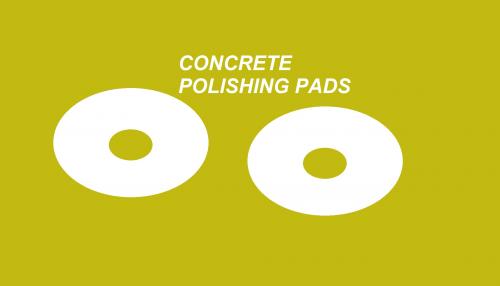Know all about Concrete pads and their uses?

Given that concrete is ground, honed, and polished to manufacture concrete countertops, it makes sense to look to two closely related industries for inspiration: polished concrete floors and granite countertops.
Let's start by examining
the polished concrete flooring market. Here, a concrete floor is polished to a
mirror quality using diamonds at every step of the process. To obtain a smooth,
glossy surface, concrete floors are first ground and flattened, then gradually
honed to eliminate scratches, and ultimately polished. It is sensible to use
the same diamond grits for floors as for floors as this sequence may also be
performed on concrete countertops.
To choose the best
diamond materials for processing concrete countertops, it is vital to
understand the major distinctions between the polished concrete flooring sector
and concrete countertops.
Concrete is the first
significant distinction. Almost always several weeks, months, or even years
have passed since the concrete was placed, giving it time to cure and become
stronger. This is the case with polished concrete floors.
Another distinction is that the concrete's composition, strength, and other properties are sometimes unknown because the polishing contractor is typically not the one who poured the concrete. To achieve the greatest results, reputable polishing companies match their diamonds to the concrete using hardness testing.
The granite business is
the other one that is linked to concrete countertops. Numerous parallels exist
in this case, not just with the tooling but also with the treatment of the
material.
Generally speaking, processing concrete countertops entails utilising a hand-held polisher to grind, sharpen, and polish the concrete's surface. It's the same with granite; in fact, both sectors share a lot of electric and air polishers.
The physical
characteristics of granite and concrete are what distinguishes them most from
one another. Even though there are a great number of distinct varieties of
stone that are marketed as "granite," they are all more comparable to
one another than they are to concrete.
All concrete countertop producers must overcome the difficulty of producing a smooth, scratch-free surface as quickly as possible after casting, whether it is polished or not.
The cement paste is strong enough to prevent the aggregates from breaking out of the concrete after it has developed enough strength, and it is also hard enough to be cut cleanly without degrading. Only when the concrete is sufficiently strong and hard will it cut uniformly and behave more like solid stone. When the aggregate and cement paste are processed together, they are cut smoothly and flush with one another.
Concrete polishing pads are available from a wide range of providers and have several brands, styles, and price ranges. It may be quite difficult to choose, and frequently, price becomes the deciding factor. This is bad since buying an inexpensive pad often results in higher long-term costs.
Post Your Ad Here

Comments